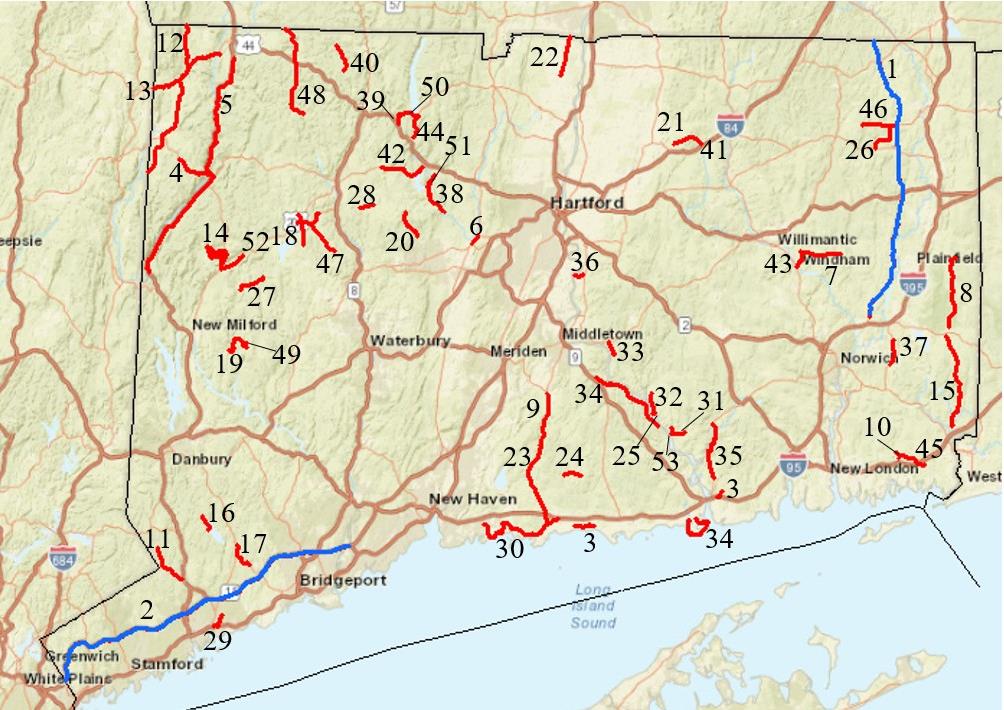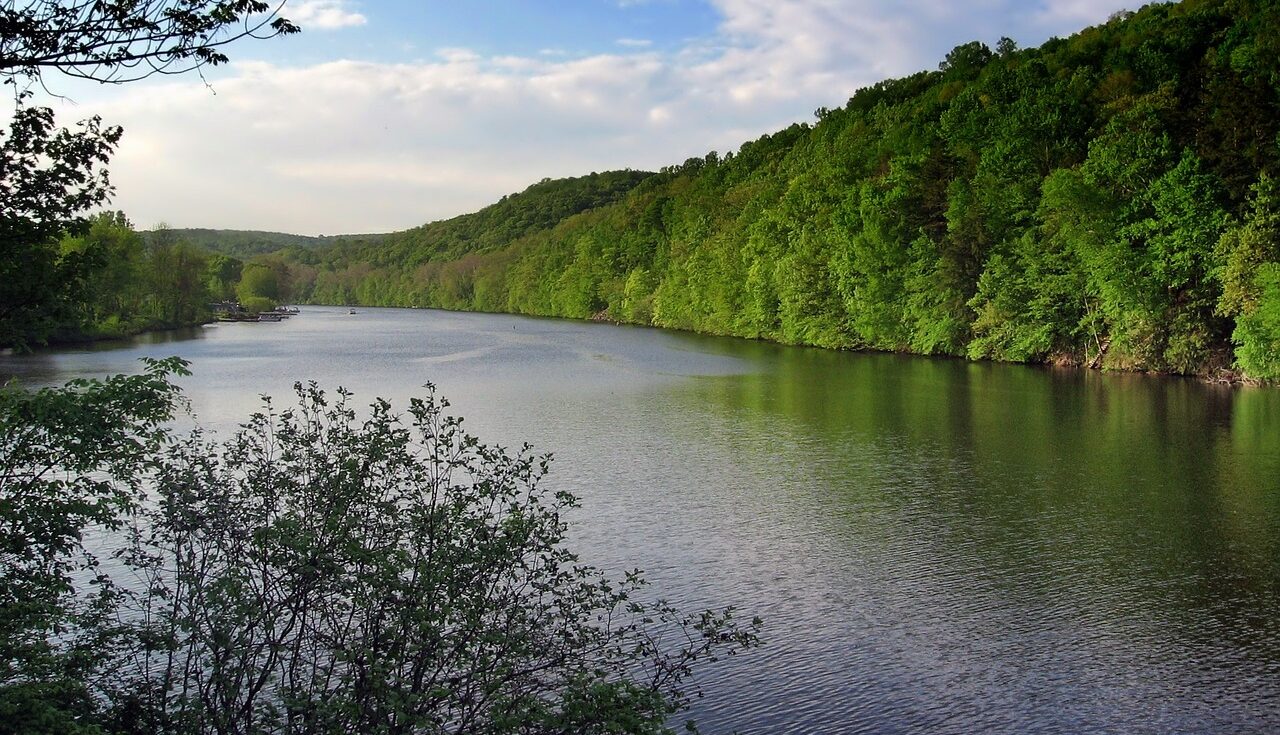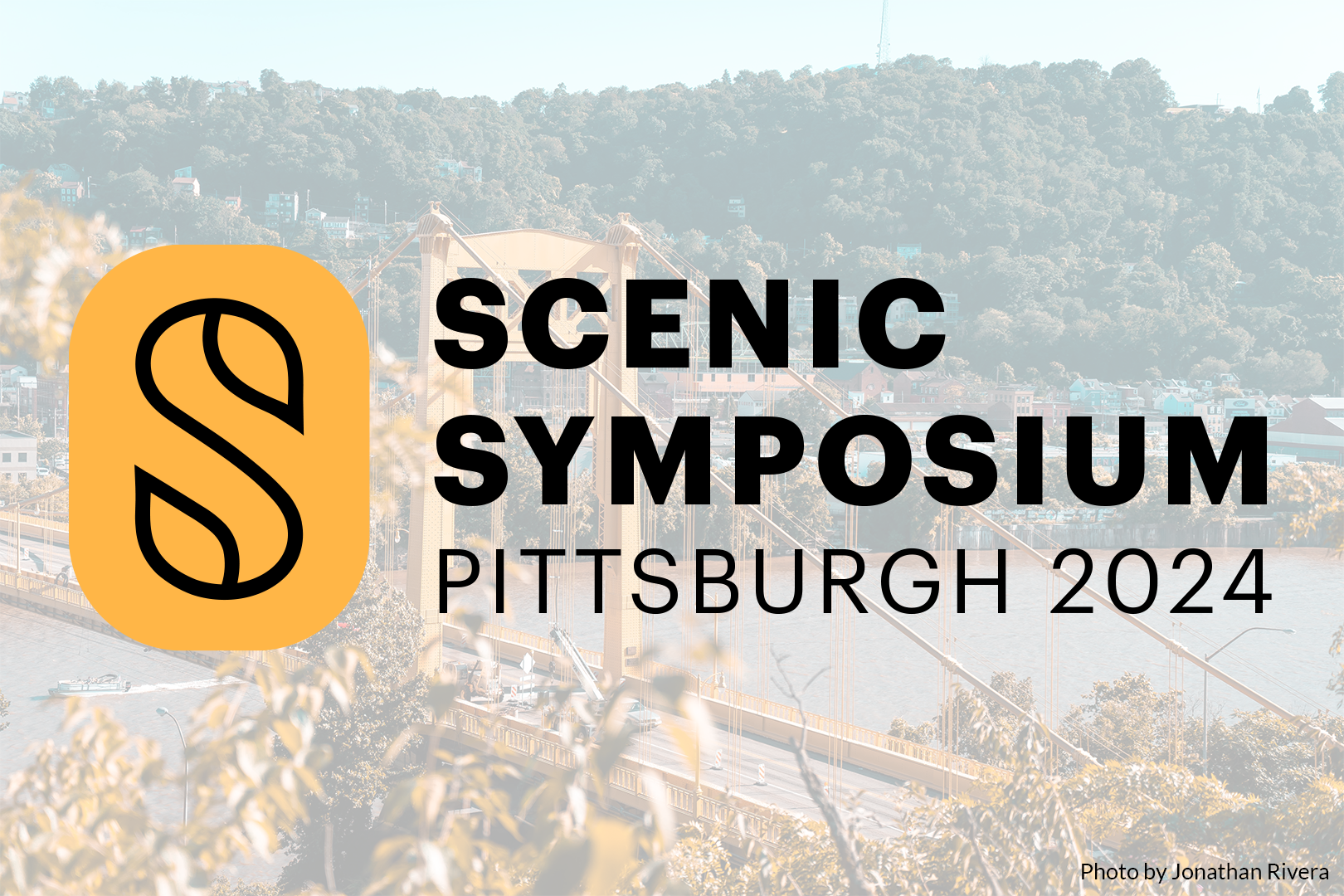Get the printable version
Each two-page document includes information about the state’s scenic byways program, in addition to a listitng and map of all state and national scenic byways within its borders.
Connecticut Byways
Connecticut is home to an astounding 53 scenic byways, two of which are part of the National Scenic Byways Program. The Merritt Parkway is renowned for its brilliantly integrated Art Deco and Art Modern bridges as well as its magnificent foliage in the fall. Connecticut SR 169—on the opposite end of the state—winds through some of the last vestiges of unspoiled New England, from its historic buildings to glacial deposits to the small towns that dot the route. Revealing the most significant characteristics of the state, Connecticut’s scenic byways provide an attractive experience for visitors, greatly benefitting the regional tourism sector.
Key Points
- Connecticut is home to two national scenic byways and 51 state scenic byways.
- Tourism sustains the jobs of 123,521 residents and paid them $5.4 billion.
- Tourism generated $960 million in state and local taxes in 2017 alone, saving residents over $700 a year and funding capital budgets for the entire state transportation and education and libraries programs.
Connecticut Byways

Map Key:
- National Scenic Byways
- State Scenic Byways
National Scenic Byways
State Scenic Byways

Byways Provide Access to Public Lands
Connecticut byways provide access to the state’s most spectacular public lands, including 108 state parks, 31 state forests, 63 national historical landmarks, one national historical park, and one national historical trail.
About the National Scenic Byways Program
The National Scenic Byways Program, established by Congress in 1991, recognizes historic, scenic, and culturally important roads, all of which promote economic development and tourism in communities around the U.S. There are more than 1,200 byways in all 50 states.
All scenic byways exhibit one or more of six core intrinsic qualities — scenic, historic, recreational, cultural, archaeological, or natural. For a road to be named a national scenic byway, it must first be designated a state, tribal, or federal agency scenic byway. Once achieving that, a road may apply for national scenic byway designation, but its intrinsic quality must be of regional significance. All-American Roads are the very best of the national scenic byways, demonstrating at least two intrinsic qualities of national significance.
